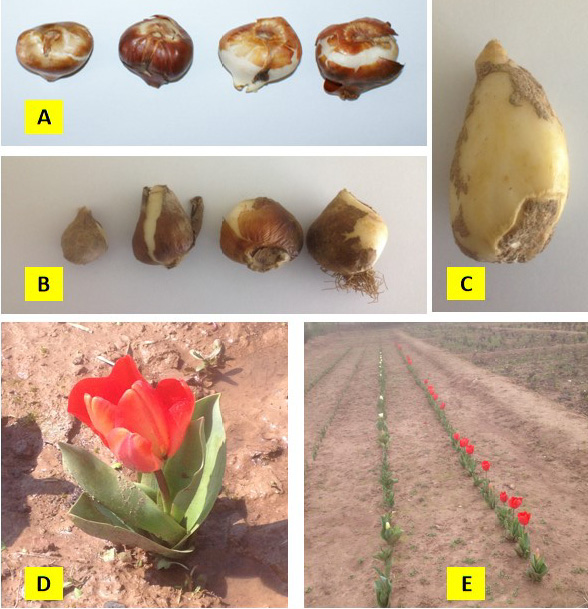Growth and Flowering Responses of Elite Varieties of Tulip (Tulipa gesneriana L.) in Rawalpindi Climate Zone
Growth and Flowering Responses of Elite Varieties of Tulip (Tulipa gesneriana L.) in Rawalpindi Climate Zone
Monis Hussain Shah1*, Riaz Ur Rehman2, Riaz Ali Shah1, Farwa Batool3, Rizwan Rafique4, Muhammad Usman5, Sajida Bibi6, Sadia Yasin7 and Samida Qamar8
A: the fresh bulbs of 2017-18 that were purchased from international importers, B: bulbs after preservation almost for 5 months prior to sowing in 2018-19. C: bulbs loss of regular shape observed during the year of 2019 after spring flowering. D: Extremely short flower stem size and E: is irregular and sparse bearing of flowers as well.
Response of commercial tulip cultivars in HRI-Islamabad in 2017-18.
Response of commercial tulip cultivars in HRI-Islamabad after storage in 2018-19.










